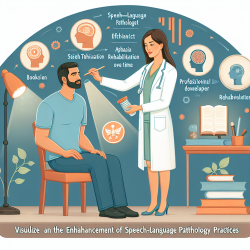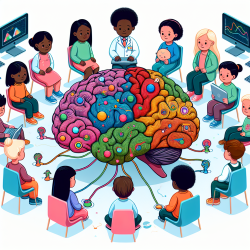Introduction
As professionals committed to enhancing the well-being of children and families, it is crucial to stay informed about interventions that aim to reduce family abuse. A recent systematic review and meta-analysis titled "Effects of Second Responder Programs on Repeat Incidents of Family Abuse" offers valuable insights into the effectiveness of these interventions. This blog post will explore the key findings and implications for practitioners, emphasizing the importance of data-driven decisions and evidence-based practices in our work.
Understanding Second Responder Programs
Second responder programs are multi-agency interventions designed to address repeat family abuse by pairing police officers with social service workers, victim advocates, or counselors. These teams conduct follow-up visits with victims shortly after an incident, aiming to educate them about the cyclical nature of abuse, engage in safety planning, and provide service referrals. The premise is that victims are more receptive to intervention immediately following victimization.
Key Findings from the Review
The systematic review analyzed 15 studies with 29 distinct effect sizes, revealing mixed results:
- No significant effects on police or victim-reported measures of repeat family abuse in aggregate.
- Experimental studies showed a 22% increase in police-reported repeat incidents, suggesting increased reporting rather than increased abuse.
- Victim service use increased by 9%, indicating that second responder programs may enhance access to support services.
Implications for Practitioners
These findings underscore the complexity of addressing family abuse and the need for nuanced approaches. Practitioners should consider the following:
- Enhanced Reporting: The increase in police-reported incidents may reflect greater victim confidence in law enforcement, highlighting the importance of building trust and encouraging reporting.
- Service Utilization: The rise in victim service use suggests that second responder programs can effectively connect victims with resources, emphasizing the need for practitioners to facilitate access to comprehensive support services.
- Timing of Interventions: The speed of the second response was associated with decreased victim-reported incidents, suggesting that timely interventions are crucial in reducing repeat victimization.
Encouraging Further Research
While the review provides valuable insights, it also highlights gaps in our understanding of second responder programs. Practitioners are encouraged to engage in further research to explore the mechanisms underlying these interventions and identify factors that may enhance their effectiveness. Areas for future investigation include:
- The role of specific intervention components, such as safety planning and legal advocacy, in reducing repeat abuse.
- The impact of second responder programs on long-term outcomes for children and families.
- Strategies for tailoring interventions to meet the unique needs of diverse populations.
Conclusion
Second responder programs hold promise for addressing family abuse, but their effectiveness remains uncertain. By staying informed about the latest research and embracing data-driven practices, practitioners can contribute to the development of more effective interventions. Together, we can work towards creating safer environments for children and families.
To read the original research paper, please follow this link: Effects of second responder programs on repeat incidents of family abuse: An updated systematic review and meta-analysis.










